Europe is full of castles, which are more imposing, beautiful, and loaded with history. About Romania, one can not say that it is a country that has among the tourist strengths the multitude of castles but if you “rummage” where you need you will discover some surprisingly beautiful fortresses, like the famous Peles, Bran and Hunyadi Castle.
But here are, in our vision, the most beautiful 10 castles in Romania.
10. The Castle of Țepes (the Impaler), Bucharest
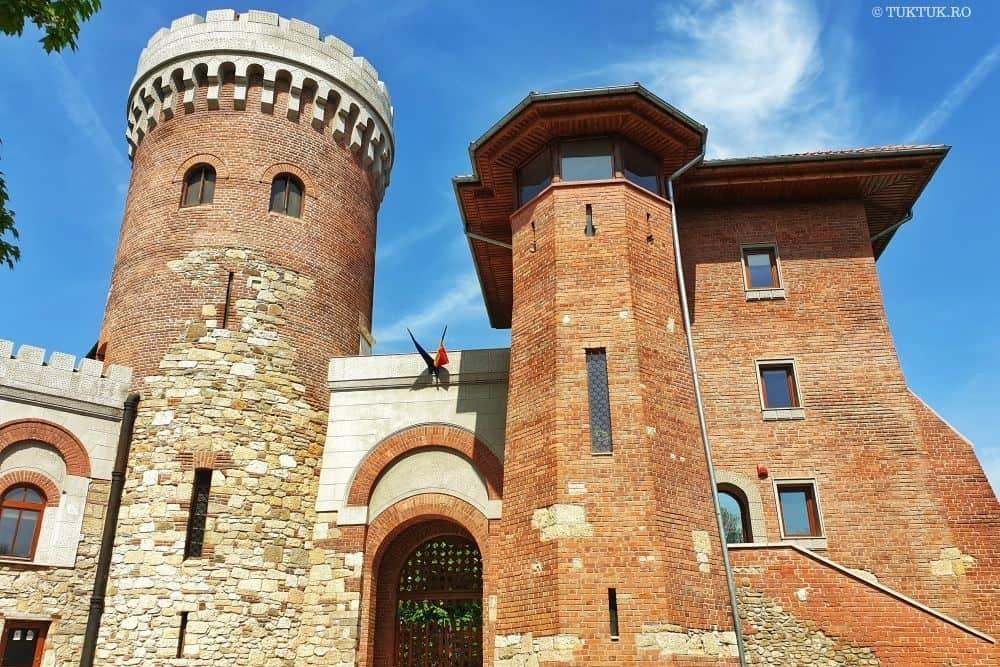
The history of Țepes Castle, in Carol Park, is relatively recent. It was erected in 1906, on the occasion of the General Romanian Exhibition, an event that marked 40 years of the reign of King Carol I. Built by architects Stefan Burcus and V. Stephanescu, the castle reproduces on a smaller scale, Poenari Fortress, built by Vlad Țepes in Cheia Argesului, Arges county. Initially, the destination of this building was to serve as a water tower. In the 23 m high tower was placed an enormous reservoir, made of cast iron, with a capacity of 200 cubic meters, which became inoperative shortly after the inauguration.
Over time, Țepes Castle served several purposes: it hosted several paintings exhibitions, was the barracks for the guard body defending the Tomb of the Unknown Soldier, was the shelter for the military who worked on the evacuation of the debris resulting from the demolition of the former Palace of Arts, was transformed into a vast bedroom for workers who labored on the arrangement of Carol Park, and, in the communist period, was used by soldiers guarding the mausoleum in the park. After 1990, the castle served as a guard for a gendarme subunit.
The Ministry of National Defense owns the Tepes Castle, and since 2004 it has been hosting the headquarters of the National Office for the Cult of Heroes, a department subordinated to The National Defense Ministry.
Address: Strada General Candiano Popescu 6, Bucharest
9. Sükösd-Bethlen Castle, Racoș (Brașov county)
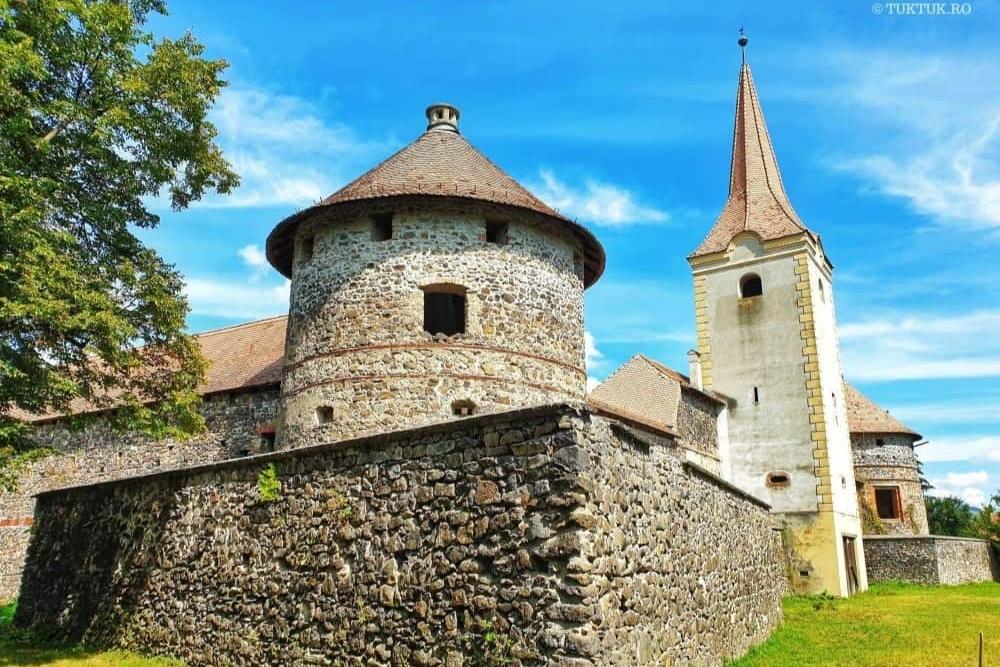
Istvan Sükösd Groful is mentioned as the builder of this castle, in 1624, on a domain received as a gift from Prince Gabriel Bethlen. Over time he had several owners (including passing through a large fire, in 1848) and in 1903, Racos bought the estate and the castle, from the Teleki family. Although built as a family residence, the castle has the aspect of a fortified fortress on two levels.
Unfortunately, during the communist era, the castle entered an advanced state of degradation after it was used as headquarters for an agricultural communist organization and a stable grain warehouse. The earthquake of 1977 also left its mark on the deterioration of the walls, the tower in the northeast being torn down. After 1990, a restoration was attempted, but the lack of funds led to the interruption of the works. The castle can be visited, being in the administration of a family (which allows access inside).
8. Banffy Castle, Bonţida village (Cluj county)
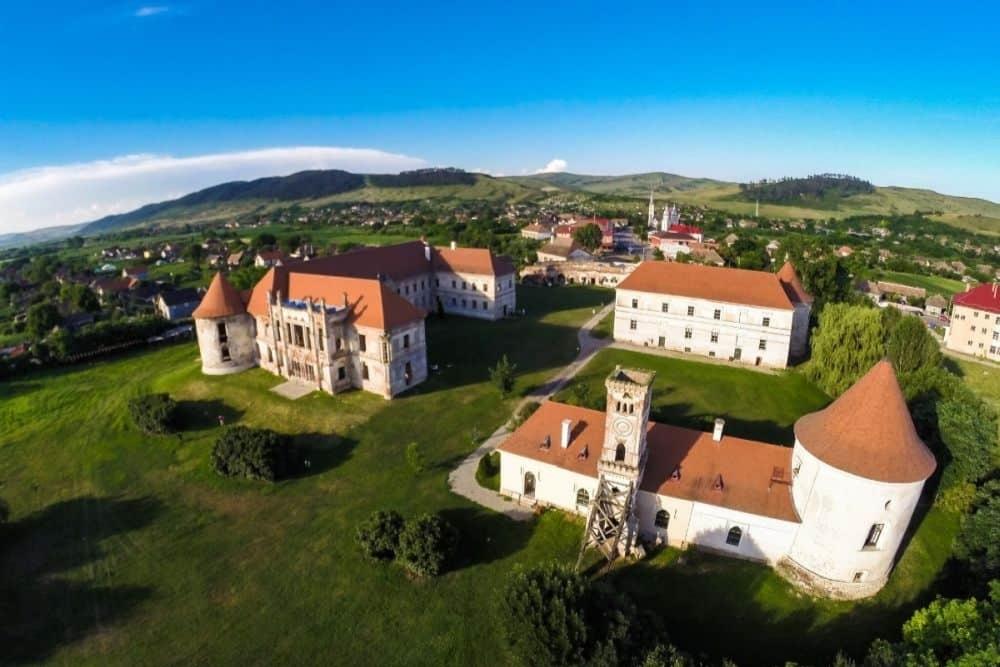
Nicknamed “the Transylvanian Versailles,” this four-bastion castle was built between 1437 – 1543 by Dionisie Banffy, committing Dabaca and Cluj, counselor of the Prince of Transylvania Mihai Apafi I. The castle’s central unit was built in Renaissance style, and the subsequent enlargements were made in baroque (18th century) and romantic (sec. 19).
Many generations belonging to the Banffy family lived in the castle, until 1944 when the residents were evacuated by the German troops, who turned the place into a military hospital in order to burn it, destroying the gallery of portraits, furniture, painting, and library. The Germans were thus avenged on the last owner of the castle, Baron Bannfy Miklos, because he had been negotiating in secret a deal with Hungary for Romania to turn its weapons against Germany, together with their neighbors.
After the war, the building functioned as a warehouse or an agricultural cooperative, with the degradation becoming more visible. The restoration of the castle began in 1999, the works being made under the patronage of Prince Charles. The Transylvania Trust Foundation is still carrying out restoration works, their pace depending on the financing obtained. The final ensemble will include a restaurant, a café, a souvenir shop, and a conference center. In Banffy Castle has been held for a few years the Electric Castle music festival. Since 2002, the castle is organizing Banffy Castle Days on the last weekend of August.
7. The Pekri Radak Castle, Ozd village (Mureș county)
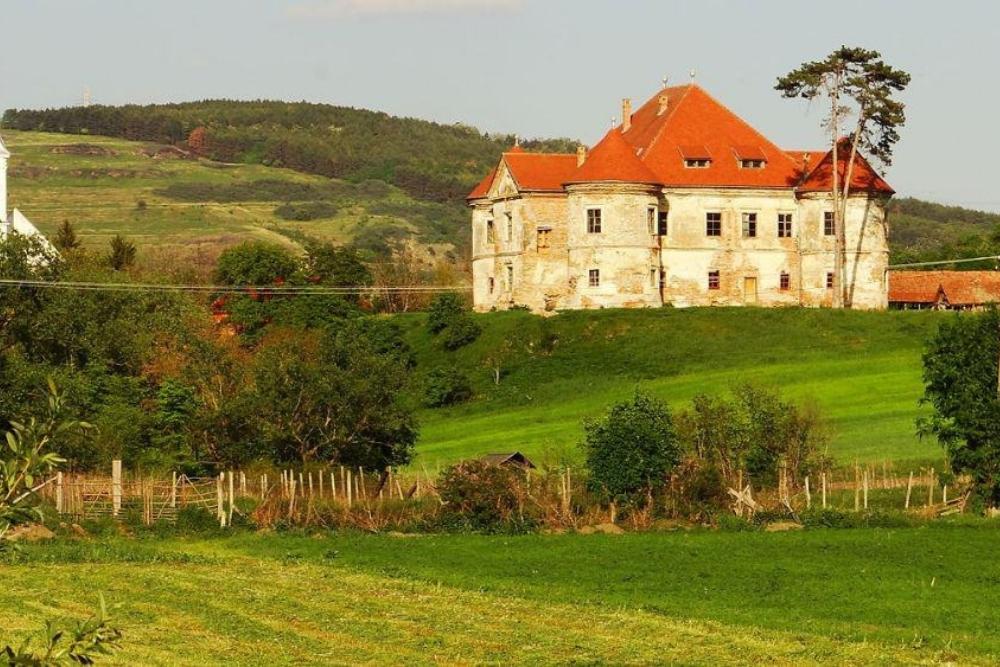
A castle whose origins remain in the dark but supposedly built in Renaissance tradition, before 1705 (according to some sources, in 1682) and rebuilt in 1732, by Lorincz Pekri. A general who participated in the antihabsburg rebellion led by Francis Rakoczi II, between 1703 and 1711. Set on fire by the Austrian lobonczs, the castle was rebuilt by Radak Adam, son-in-law of Pekri.
In the first decades of the 20th century, the owners were Baron Janos Kodradshein and Ilona Teleki, his wife, who had to leave the country in 1945, after the nationalization. The castle then entered the state’s property and served as the headquarters of the C.A.P (agricultural organization) and as a house of culture. After 1989 he was returned to the daughter of Ilona Teleki, who donated it to the Christian foundation Bonus Pastor, the one who leased the property for 99 years and under which the restoration works began.
6. Sturdza Castle, Miclăuşeni village (Iași county)
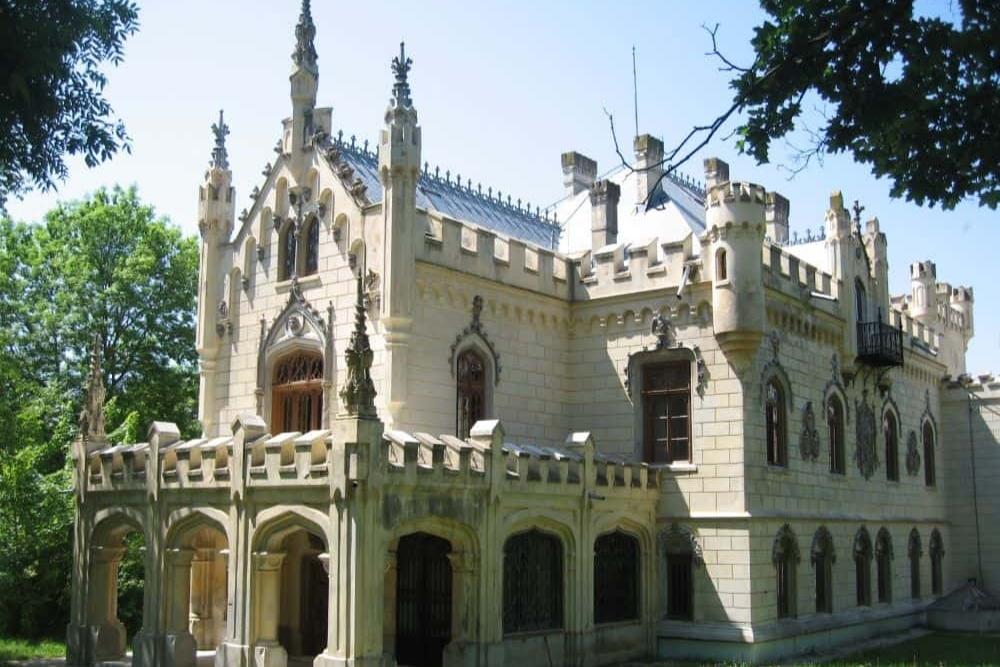
Located 65 km from Iasi city, in the Romanian region of Moldova, Miclauseni village encompasses a lovely castle in Neogothic style, built between 1880 and 1904 by George and Maria Sturza, on the site of an old mansion. During the First World War, the castle was transformed into a military hospital, Maria Ghica and Ecaterina Cantacuzino (daughter of George Sturdza) helping the wounded from the position of nurses. Elena then managed the castle until 1944, when she left it because of the war.
There were valuable collections of documents, medieval costumes, jewelry, paintings, weapons, and books in the castle. About 60,000 copies, some of them extremely rare. Unfortunately, in the winter of 1944, with the stationing of some German prisoners in the fortress, many of the books were used as fuel for stoves, others were sold and used to pack goods and some of the remaining ones were saved and safely deposited in Iasi or sold to the Central University Library of Bucharest.
After 1947, Ecaterina Cantacuzino donated the castle to the Roman Diocese to establish a place of worship. But the monastery was dissolved after only a few years by the communist state that nationalized the castle and turned it into a military warehouse until 1960, a year when the destination of this has changed radically, becoming a foster home for children with disabilities. Several fires have consumed the castle’s furniture and walls during the ages, contributing to its state of decay.
Owned by the Metropolitan of Moldova and Buvocinei, Sturdza Castle was reopened to the tourist circuit in 2014, after ten years of restoration. But the works have not been fully completed, with the Metropolitan Church hoping to raise funds from the fees charged to visitors.
5. Karoly Castle, Carei (Satu Mare county)
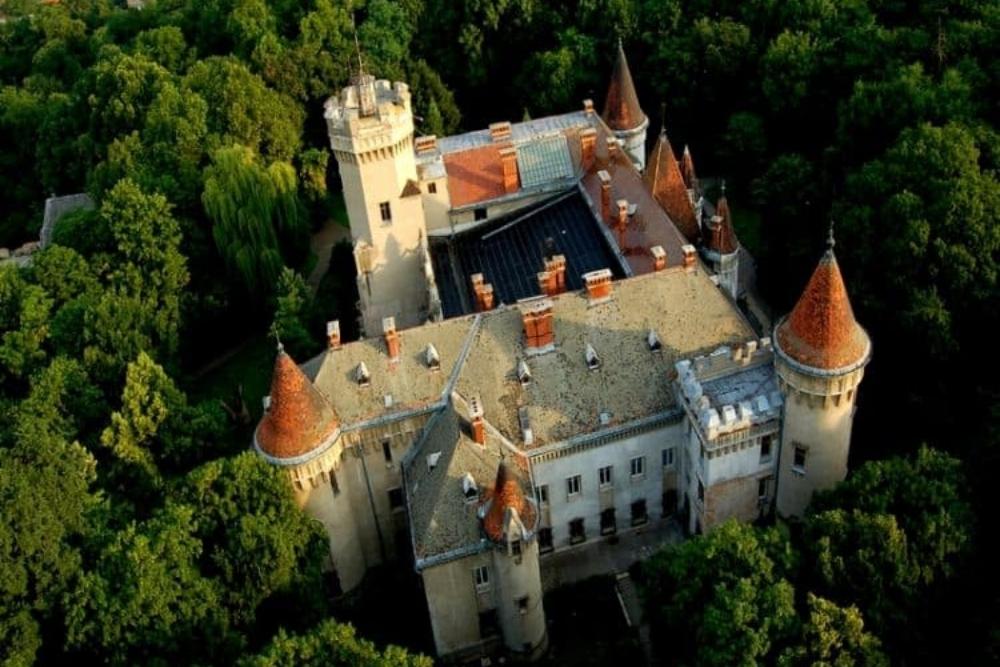
In 1482, Karoly Laszlo built a house that would starve the envy of the nobility in the Satmar committee. Matei Corvin settled the conflict. In 1592, Karoly Mihaly is forced to strengthen the construction made 100 years ago to deal with Turks invasions: surrounded it with thick walls with bastions and dug an outer ditch that had a suspension bridge, turning it into a real castle that would stand out as an important fortress of defense of Transylvania over the 17th and 18th centuries.
After completing his military mission at the end of the 18th century, Karoly Jozsef demolished the walls and closed the ditch, rebuilding the castle. The works were finished in 1794, the new building being built in baroque style, having 41 rooms and a chapel, plus a manege and a botanical park. Unfortunately, the earthquake in 1834 reduced the size of the castle, restored in 1896, in Neo-Gothic style, returning to the military elements of the old one – the bastion and the water ditch – decorative this time.
Between the two world wars, one part of the castle was turned into a sanatorium, the other hosting a casino. During the second big fight, the Karoly family consented to the building to function as a military school and later an army hospital. During the communist period, various cultural institutions were located in the castle: a museum, the cultural house of Carei, the city library, and a high school.
Annually, about 40,000 tourists visit the castle of Carei, attracted by its beauty, the few interesting local legends, and the superb dendrological park that surrounds it. Currently, the castle is managed by the Carei Town Hall, which implemented a 4 million euro European project, rendering it to the tourist circuit. Here, various cultural events, exhibitions (three of them are permanent), concerts, and marriages are officiated.
4. Corvin Castle (Hunyadi), Hunedoara
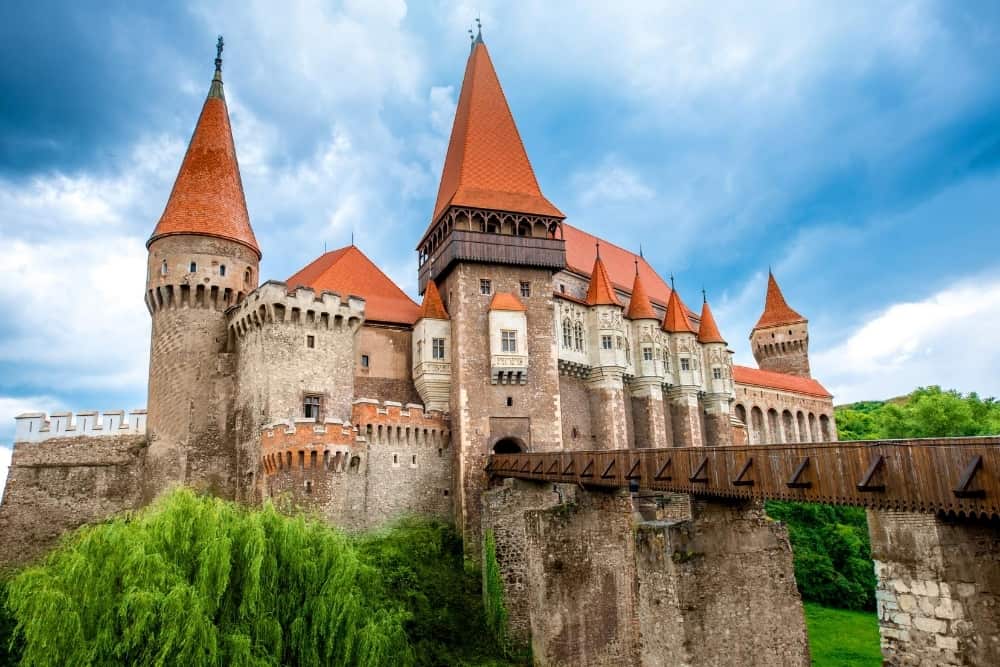
The medieval fortress of Hunedoara, called Corvin Castle or Huniazilor Castle, was built in the 15th century by John of Hunedoara (the leader who stood in the Turks’ way in their European expansion) rock near Zlasti River. Well preserved, the castle in a gothic style covers a surface of 7000 sqm, having 42 rooms, two bridges, and two terraces. During Iancu, the castle was a point of great strategic importance and a feudal residence animated by numerous events.
Devastated over time by several fires, the castle went through several restoration processes after 1997, entering a grandiose valorization project. The access to the castle is made on a wooden bridge, supported by four stone pillars that support the riverbed of the Zlasti river. The museum inside houses many collections of archeology, ethnography, numismatics, ethnography, and military technique.
3. Bran Castle, Bran village (Brașov county)
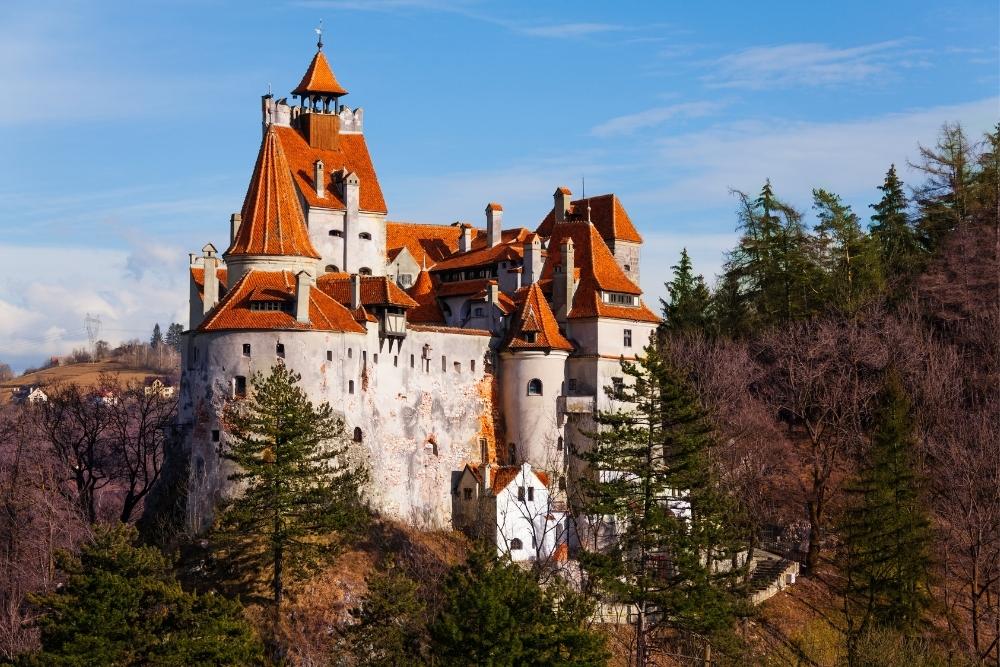
In 1211, the Teutonic Knights of a Catholic order founded by the German Crusaders in Palestine at the end of the 12th century, received as a gift from King Andrew II of Hungary the Tara Barsei district, to defend the south-eastern border of Transylvania from the attacks of the Pecenegi invaders. Teutons raise a fortress in Bran but in 1226 are expelled from here. This is the first mention of Bran Castle, which will rise after the document issued by King Louis I of Hungary (in 1377) that gives the Saxons in Brasov Chair the right to build a new stone fortress, at their money and expense.
Over the next few years, the castle was used as a strategic base by Sigismund of Luxembourg, who gave it to his vassal, Mircea the Old, in 1407. Twenty years later, the castle became the property of the Crown of Hungary, which strengthened it, expanded it, and, in 1498, rented it to the seat of Brasov. Also, in the 15th century (1459), Iancu de Hunedoara asked Vlad Tepes to defend the pass to Transylvania by crossing this fortress – this is the reason for the emergence of myths related to Count Dracula, the ones on which the castle became famous worldwide. But it seems that Vlad Tepes never lived in Bran Castle.
On December 1, 1920, the castle was donated to Queen Mary as a symbol of gratitude for her contribution to creating the Great Union, in 1918. In 1938, Princess Ileana received the castle by will, but soon, the royal family was expelled from the country, and the castle entered the property of the communist state.
Continuously degraded, Bran was closed to the public between 1987 and 1993. It was then retroceded and currently belongs to Dominic of Habsburg, the successor of Princess Ileana. After the restitution, the castle’s interior was stripped of many essential pieces, becoming rather austere. The Ministry of Culture moved the furniture, and the rooms were decorated with parts belonging to the owners.
2. Cantacuzino Castle, Bușteni
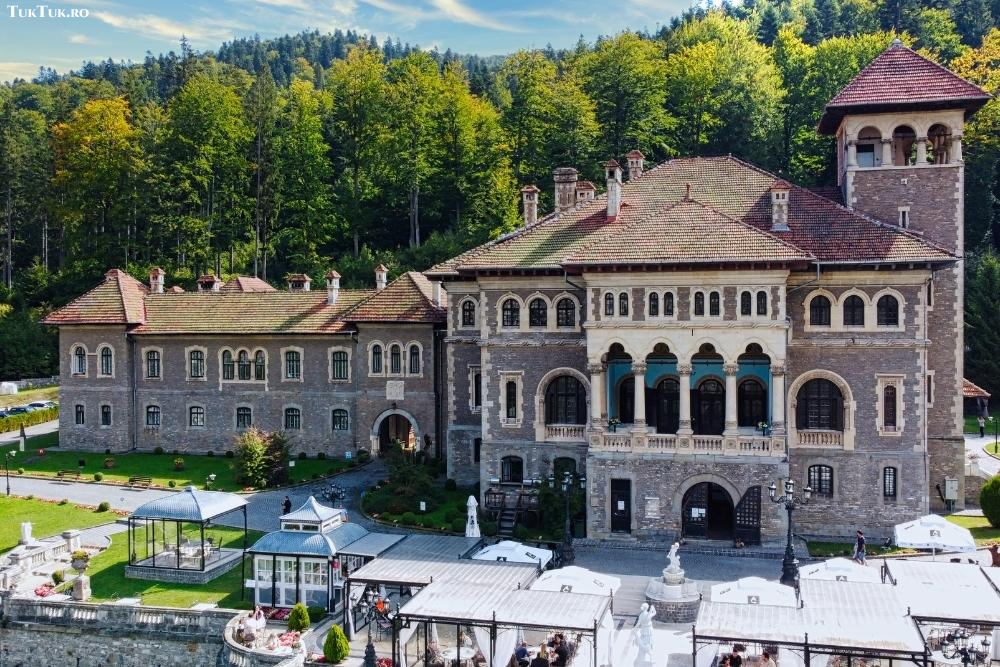
This beautiful castle of Busteni was designed and built, in neo-romanesque style, by the architect Grigore Cerchez in 1911, by order of Prince Gheorghe Grigore Cantacuzino (Nababul), former minister of Romania, in two periods: at the end of the 19th century and the beginning of the 20th century. Since 2010 it has rejoined the touristic circuit.
Stretched on a surface of 3148 m and built of stone and brick, Cantacuzino castle consists of four bodies and is surrounded by a park with a cave, several waterfalls, and fountains. In the reception hall, there is a collection of heraldry, unique in Romania, representing the coats of arms of boyars families with the Cantacuzino family.
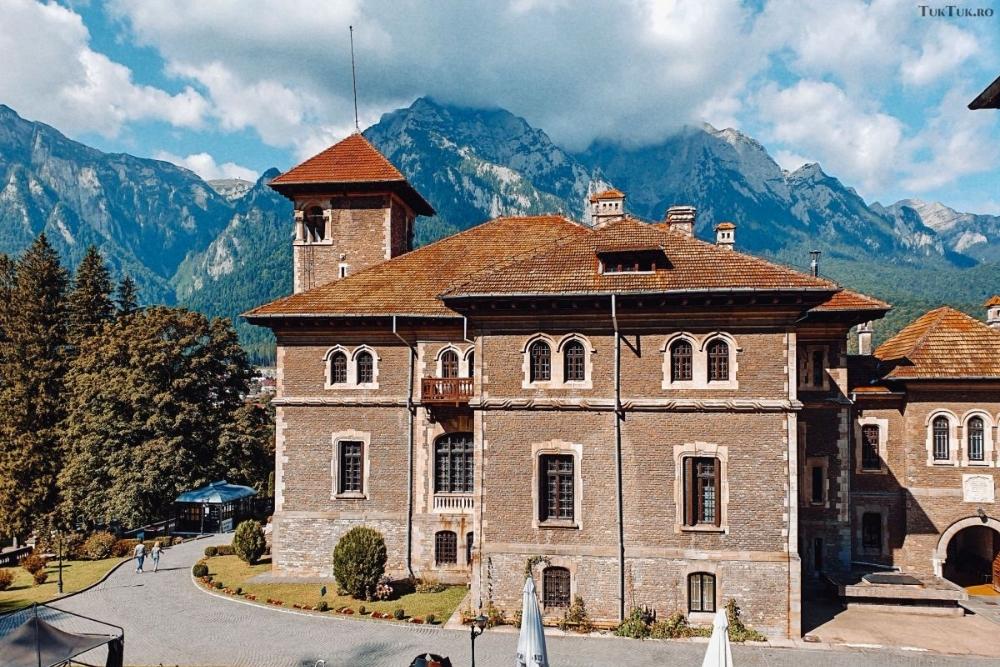
One of the modern attractions of the castle is the restaurant Canta Cuisine, with a capacity of 110 seats. The preparations are made by the chef, Romica Harabagiu, who completed his gastronomic experience in countries like Japan, China and, more than 7 years, in Marseille. Here you can organize festive dinners, and from its terrace, you can admire the view of the Bucegi Mountains. There is a bar and a cigar lounge in the restaurant.
1. Peleș Castle, Sinaia
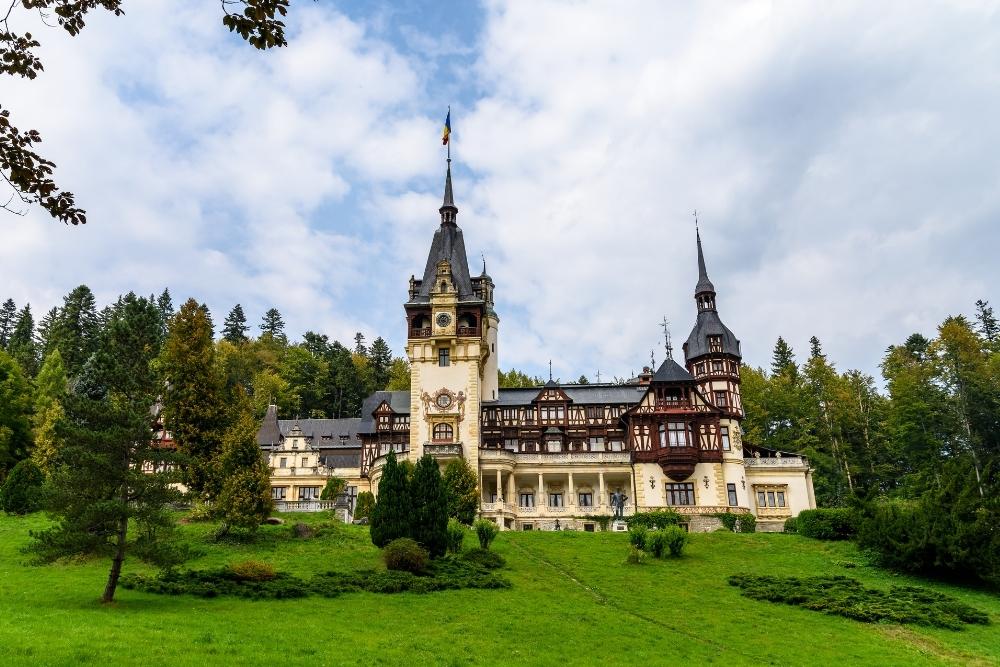
In 1874, Neagului Bridge, a village with a surface of 24 km, received the name Sinaia at the initiative of King Carol I, the first king of Romania. Between 1873 and 1875, in the name of the same Carol, is laid the foundation of the future Peles castle, seen by the king as his summer residence, invested with political, cultural, and symbolic functions. The works took place under three architects, Johannes Schultz, Carol Benesch, and Karel Liman, and ended in 1883. Still, over the years, they were completed until 1914 (the death of King Carol I), with other development plans. Also, between 1889 and 1903, was built nearby Pelisorul, a reduced-scale replica of the castle-mother.
From 1914 to 1947, the castle served as a space for official visits, including ceremonies of a military character. In 1948, Peles was closed by the communist authorities, and the patrimony goods were inventoried, part of them being transferred to the Art Museum in Bucharest. In 1953 it became a museum, being open to the touristic circuit (but this happened since the time of King Carol I). After 1990 (more precisely, on February 20, 2007) it was returned to the former King Michael I, remaining open to the public.
From an architectural point of view, Peles Castle is built in German neo-renaissance style. It is considered one of the most beautiful castles in Europe, being equipped from the beginning with some modern elements: interior elevator, central heating and, in particular, the own power plant, located on the bank of the nearby brook. The Peles has 170 rooms, of these only ten being accessible to tourists (among them, Maura Hall, Florentin Salon, Columns Hall, Weapons Hall). There are several valuable collections of sculptures, armor, paintings, tapestries, furniture, ceramics, silver, and porcelain in the castle.
Read also: The mysterious Cistercian Monastery of Cârța, in Romania

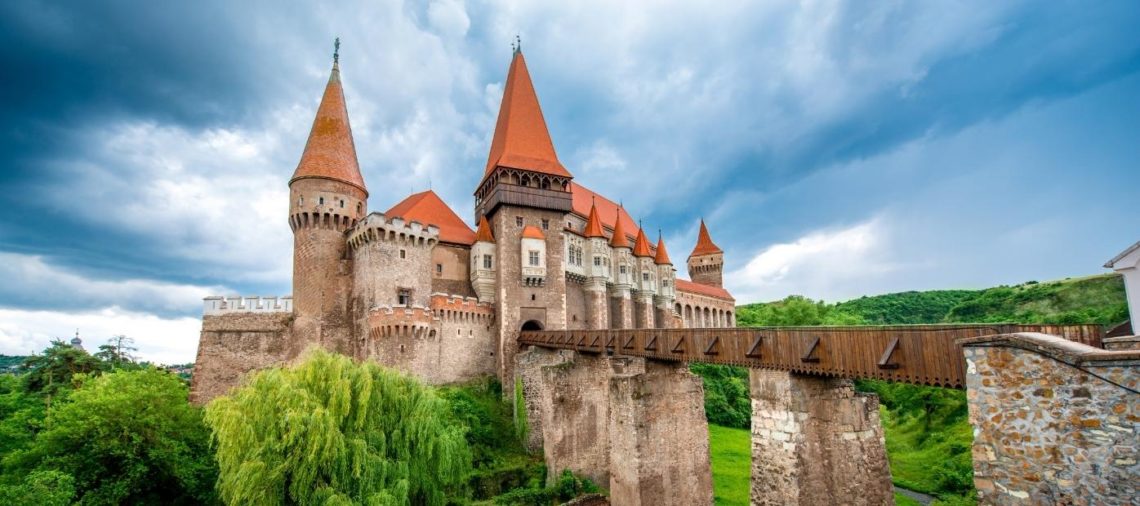



Comments 1